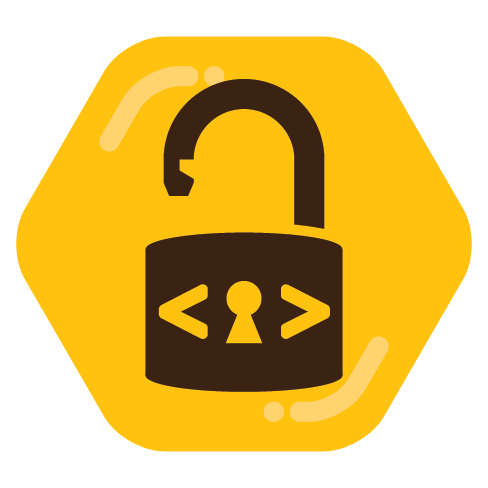DoH & DoT still leak the domain name (and of course IP address) you’re connecting to. The domain name leak can be solved by Encrypted Client Hello but that’s still a draft and not turned on for many servers.
- 0 Posts
- 29 Comments

 5·1 month ago
5·1 month agoI’dv deleted the default, it’s never come back.
Except Alpine & those based on it, which uses Linux but not GNU libc or GNU coreutils or GNU BASH… Just musl libc & Busybox. I.e. the entire subject of this thread is one of the non-GNU Linuxes.
Yes, I listed sysvinit for that reason. And Musl instead of glibc. GNU is optional in a Linux distro, except for the kernel’s use of a GNU license.
Sure, I should have gone further.
Systemd/GNU libc/GNU Coreutils/GNU BASH/Linux/X11//GTK/GNOME
Systemd/GNU libc/GNU Coreutils/GNU BASH/Linux/X11/GTK/LXDE
Systemd/GNU libc/GNU Coreutils/Zsh/Linux/X11/GTK/GNOME
Systemd/GNU libc/GNU Coreutils/Zsh/Linux/X11/GTK/LXDE
SysVInit/musl/Busybox/tcsh/Linux/csh
Systemd/GNU libc/GNU Coreutils/Zsh/Linux/Wayland/QT/KDE Plasma
Systemd/GNU libc/GNU Coreutils/Zsh/Linux/Wayland/QT/LXQTetc, etc.
There are thousands of combinations of the possible layers needed to make an OS.
Systemd/GNU/Linux/GTK or Systemd/GNU/Linux/QT, really…

 21·8 months ago
21·8 months agoUsed it for the last few years. X just doesn’t work right with multiple monitors of different resolution.

 1·8 months ago
1·8 months agoYou wouldn’t end up at a login screen, you’d end up in the last logged in user’s session.
People use computers to accplish tasks. That requires running software on an OS, but nobody runs software or an OS just to sit & watch it exist. They run it to accomplish tasks.
Different distros mostly vary in how easy it is to accomplish various tasks. No one distro is the easiest for everything, so people make different choices depending on their needs.

 1·1 year ago
1·1 year agoI use NixOS & Home Manager. My config is in
git, and I use an ephemeral setup with ZFS & tmpfs:Mount layout:
/ tmpfs ├─/boot /dev/sda1 FAT32 EFI system partition ├─/nix rpool/local/nix ZFS partition ├─/home/persist rpool/safe/home ZFS partition └─/persist rpool/safe/persist ZFS partitionZFS partitions under rpool/safe/ get backed up, the rest don’t need to be. Everything else can be rebuilt (and most of it gets re-created at boot anyway, since / and /home are tmpfs).
#define max(x,y) ( { __auto_type __x = (x); __auto_type __y = (y); __x > __y ? __x : __y; })GNU C. Also works with Clang. Avoids evaluating the arguments multiple times. The optimizer will convert the branch into a conditional move, if it doesn’t I’d replace the ternary with the “bit hacker 2” version.

 1·1 year ago
1·1 year agoYep, it’s basically a way to define new groups per directory. But these groups are hidden from the normal group commands!
Hah! Lots of (shitty) sites don’t allow some “special” characters, like '. That’s usually a sign that they’re storing passwords insecurely, and it’s always a sign that they’re not following current security best practices (composition rules reduce security).

 2·1 year ago
2·1 year agoI deliberately run / and /home as tmpfs. Then everything I want to persist across boots gets symlinked in at system start, and anything I didn’t opt in to saving gets deleted every boot.

 4·1 year ago
4·1 year agoAnd color management. Useless for photo editing, stuck with 8-bit sRGB.

 17·1 year ago
17·1 year agoThey also separate concerns better than classical distros. Executable binaries & libraries are separate from configuration which is separate from data. It makes backups much simpler, makes configuring new machines easier than something like Ansible, etc.

 62·1 year ago
62·1 year agoi^2 = j^2 = k^2 = ijk =-1
It’s especially funny because systemd isn’t one program any more than GNU is. It’s a project. systemd-initd handles init. systemd-journald handles journal logs. systemd-resolved handles DNS resolution. Etc. Each systemd daemon has one area of responsibility!

 1·1 year ago
1·1 year agoYes, or if you override something you’ll compile that thing and anything depending on it. If you override glibc, you’ll recompile pretty much the entire system!



Non-stick pans tend to be made of aluminum (660°C melting point), sometimes alloyed with some copper to improve thermal conductivity. Aluminum-copper alloys tend to melt in the 500-600°C range. Most aluminum alloys melt at a point which an electric stove can easily reach if left on high. The coils can glow cherry-red pretty easily, which is 815-870°C.